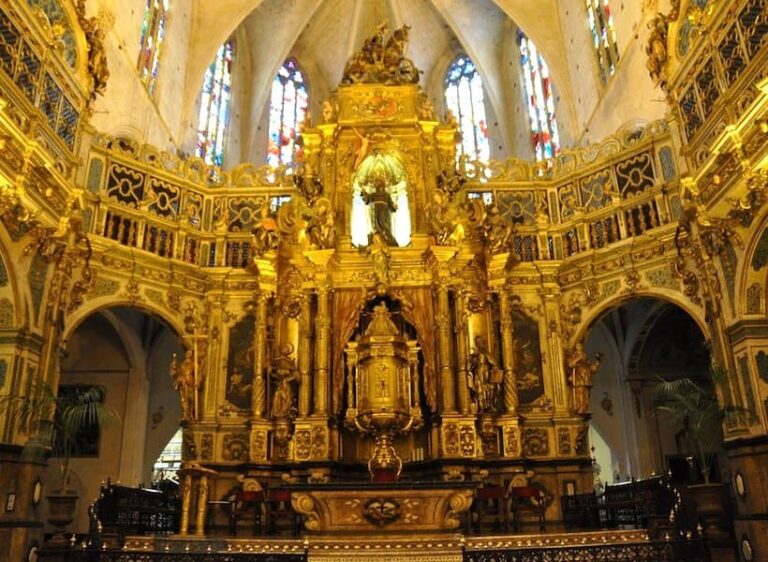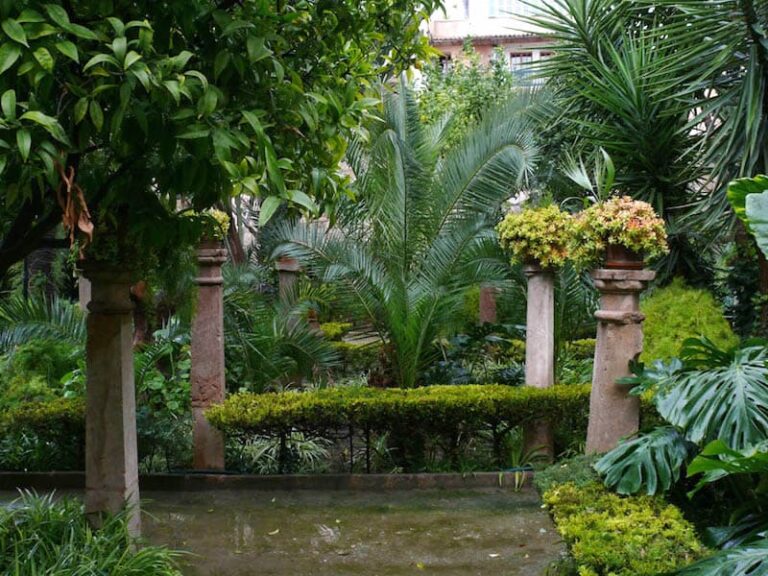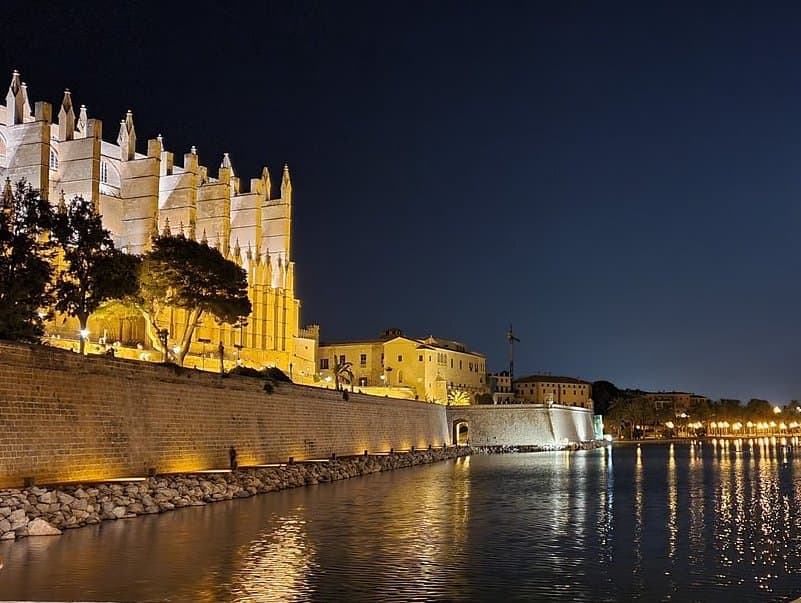
“Gothic beauty: where faith meets architectural majesty”
Driving in to Palma from the airport you pass the spectacular Palma Cathedral in distance.
When you see it you wont be surprised that its become one of the major tourist attractions on the island.
But before you go on a visit let’s get up close and learn a little more of the Cathedrals long and rich history. It’ll help you appreciate its true magnificence even more.
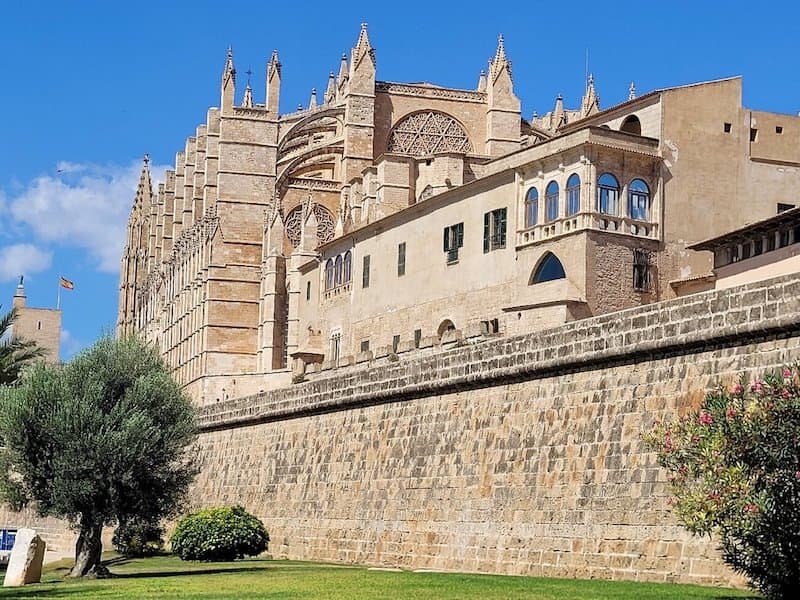
What’s in the Article
La Seu a Long History
So after liberating Mallorca from the Almohad Moors King Jaume I started building work on the present day Cathedral site in 1260, right on and over the site of the main Moorish mosque.
Of course he didn’t live to see it finished, he died in 1276 in Valencia. But after his death building work continued in many stages over the next 400 years,
The nave was finished in 1587 and 14 years later in 1601 the main portal was consecrated. Really the entire structure was only “finalised” in the 19th century.

Just in time to suffer the earthquake of 1851 which damaged the structure. So elements of the Palma Cathedral were reconstructed in a stunning neo-Gothic style that we see today.
Palma Cathedral not only stands among Spain’s largest Gothic churches but also boasts a truly incredible 11 meter floral motif rosette crafted back in the 14th century with over 1,200 pieces of glass flooding the interior with colors in the morning sun-light.
The central nave, towers 44 meters above the worshipers, one of Europe’s tallest.
The present day footprint of the La Seu ( as it is referred to by the local community ) stretches 109.50 meters by 33 meters. Truly monumental.
With a built area of 6,600 square meters it is said it can accommodate 18,000 people, I don’t know if that’s ever been tested though!!
Present Day Palma Cathedral
We see La Seu of today set back from the sea, but when it was built Ithe Mediterranean lapped all the way up to the cliff edge below it. You can still see the remnants of a small harbor today beside the Almudaina Palace adjacent to the Cathedral.
Through the 1960s and 70s, an artificial salt water lake and a road were created below the cathedral, but the old sea wall is still standing strong. It’s actually a prominent feature of the present Parc del Mar.
Of course there are guided tours around the building and if you’re felling fit enough you can climb the 215 steps from the Portal de l’Almoina right up to the church tower and the roof.
It’s worth it, the views of the city, the sea and all the way to the Tramuntana mountains are just awe-inspiring.
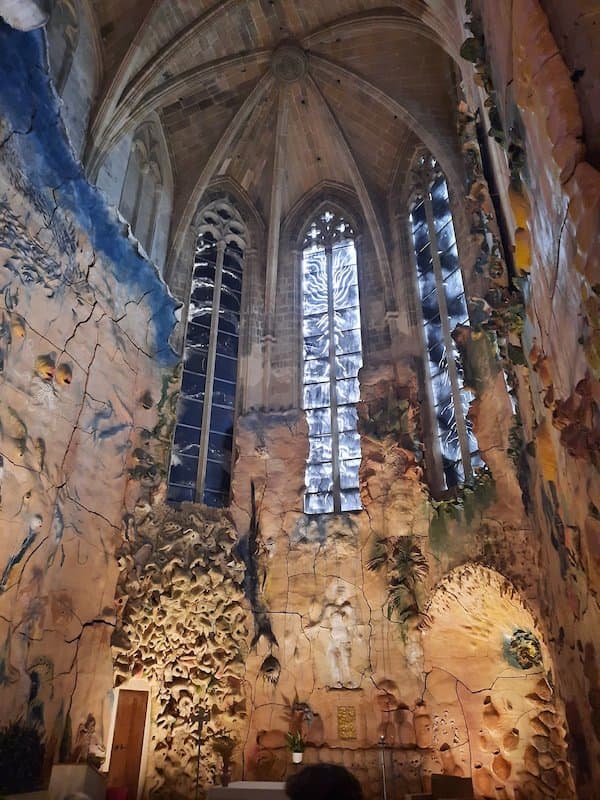
Part of your tour will include work by world renowned local artist Miquel Barceló who has created a tryptic ceramic altar in the St. Peter’s Chapel.
When I tell you he’s reported to have used 15 tons of clay in making the art installation you can get an idea of the absolute scale of it.
In your writers humble opinion the clay should have stayed in the ground!! But hey that’s just me.
It was inaugurated In 2007 with the royal couple Juan Carlos and Doña Sofia in attendance.
I wonder what they thought of it !!
Is it Worth going inside The Cathedral?
Definitely. It’s a wonderful even uplifting experience to view the splendour of the Cathedral interior. You can’t get a full sense of the immense size of the Palma Cathedral. without stepping inside and looking up.
A trip up onto the roof is the icing on the cake, if you can manage the stairs
How to Avoid the Queues
There can be long queues to visit the Cathedral in the high season so always best to book well in advance.
Here’s a handy link to book your tickets early
Places to Visit Close by
When you plan your visit to the Palma Cathedral give yourself time to walk the narrow streets behind it. This old part of town, in places has a real feel of stepping right back to the Middle Ages.
You’ll pass by palatial mansions with magnificent courtyards and lots of churches, monasteries and convents including the impressive Sant Francesc d’Asís church and cloisters.
Nearby and just down the hill you’ll find the Arab baths built when the city’s mosque occupied the site of the Cathedral itself.
You’re in Spain so it goes without saying there are plenty of cafes, restaurants and bars to en-route too.


